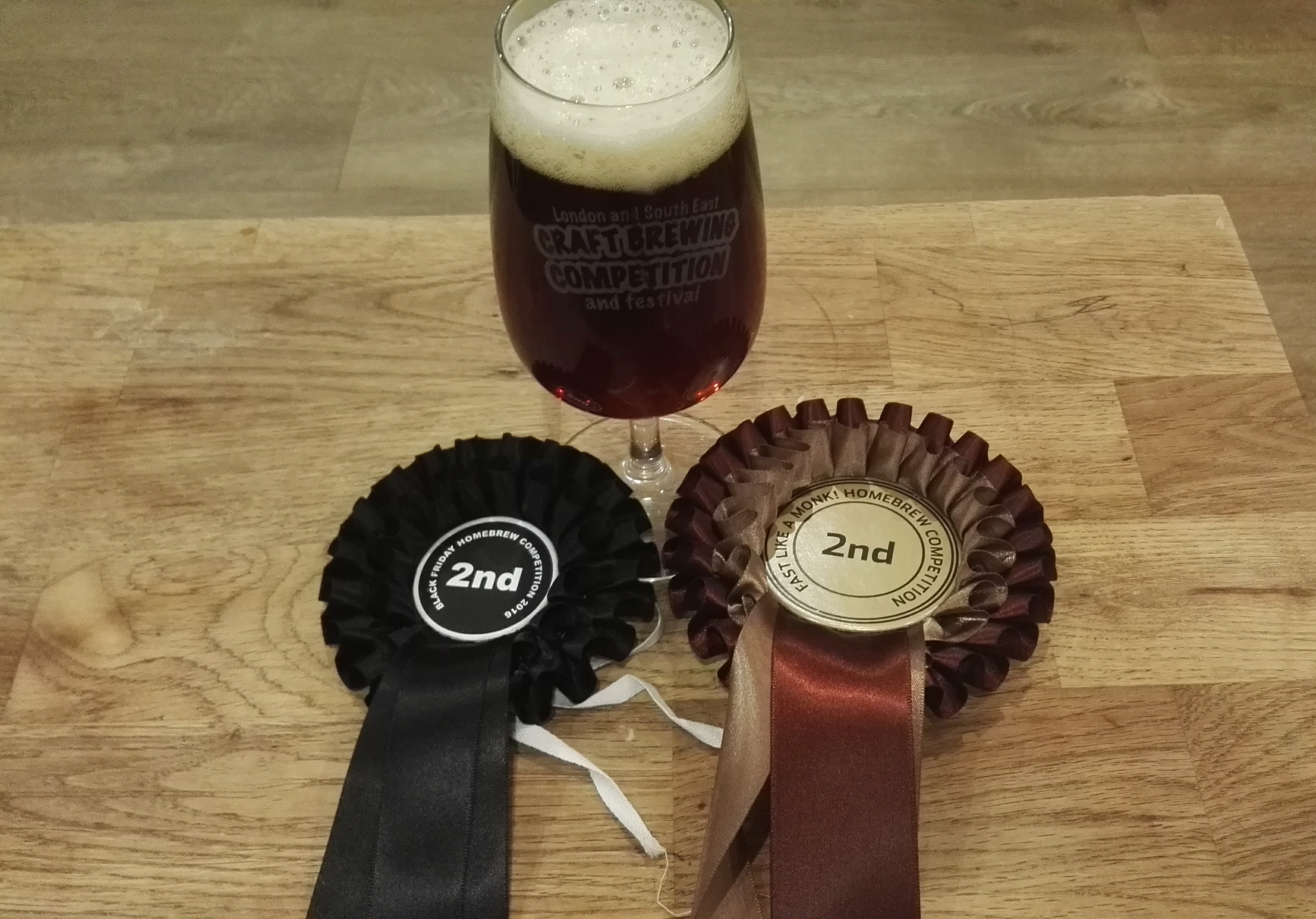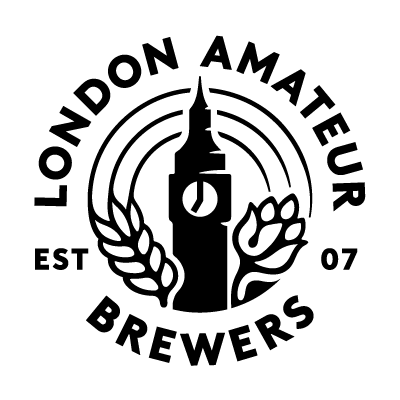LAB Report
–
November
Proceedings of the meeting of London Amateur Brewers on Monday 5th November at UBrew
News and Announcements
The news in November is dominated by BrewCon, and associated events. Brewcon itself will be held on the 24th November at the Oval Space in East London, with a variety of trade stalls, workshops, tastings and talks (including ones by our own Lee Immins, and celebrity alumnus Andy Parker of Elusive Brewing). Tickets available here
Part of the BrewCon festivities is the BrewCon World Series II homebrew competition. Entries are currently closed, but judging is taking place all this week, so if you can make it along to Beer Merchants Tap in Hackney Wick give it a go… if you haven’t judged before, stewarding is a great, low-pressure and enjoyable way to get into beer judging. Beers that have progressed to the next round are being announced on the World Series facebook page, and the overall winners will be announced at the thrilling conclusion of BrewCon.
Another highlight of BrewCon, and one we’re all looking forward to, is the Club Night afterparty. This will also be at Beer Merchants Tap, and will take place straight after BrewCon finishes. This is homebrewers only, so if you’re interested, get in touch with your club. LAB members can get more details by contacting us in the usual ways. If you’re interested in bringing beer to share, let me know as soon as possible.
There are also a lot of planned social events over the next few months, check the calendar, forum and slack, or feel free to email for more details.
Competition News
Our own Lager Than Life competition, as far as we know the only lager-only homebrew competition ever done in this country, is now open for registration and adding entries.
The National Homebrew Competition opens for entries next Monday (12th November)
Club Successes
Lucas Stolarczyk won 2nd Overall at the inaugural BrewBrighton Brew Local competition with his Blackberry Porter ‘Gaius Rubus’. This was a very interesting competition, focusing on ‘localism’ in beer, and we hope to see it repeated.
Mark Sanderson won Best Beer for the third time in a row at the Bexley Homebrew Festival with his Dark Mild, pulling off an impressive and unprecedented hattrick. The festival itself was a highly enjoyable event, with many excellent beers on offer (as well as wines, ciders and bread!). Kudos to LAB’s Phill Turner for his part in organising it!

Presentation
This month’s presentation was a thorough and in-depth look at Stouts and Porters from Alex Allen, with particular focus on the complex and uncertain history, how they presents today, and the best ways for homebrewers to tackle the styles.
As well as the information presented in the powerpoint (which will be uploaded soon), questions and answers from the audience also addressed the following points.
- Nitro dispense – some members have had good results experimenting with ‘beer mix’, a Nitrogen and Carbon Dioxide blend that can operate at higher pressures without over carbing the beer, and gives the characteristic cascading head and smooth mouthfeel.
- Traditional Guinness dispense – one member recalls that, before keg dispense, Guinness was mostly poured from a large, older cask, then topped up with a smaller, better-made, and more highly carbonated cask.
- Vanilla and Bourbon additions – consensus was to use a moderately expensive bourbon, as the character does come through, but not sufficient to waste an expensive bottle. Most people added vannilla by chopping finely and/or extracting flavour by soaking in spirits.
Members’ Tastings
A huge turn-out of 14 beers for the tasting session meant we had to split the group, so it wasn’t possible to get an overall consensus on Favourite Beer of the meeting, although our group were highly impressed with Paul’s NEIPA which managed to get a very distinct and juicy flavour of mandarins and mango from Centennial and Galaxy hops. The other group were especially impressed with Jacques‘ Old Ale, which won a medal at LSECBC last year, and has only improved and mellowed with age.
Amongst the issues and questions generated during the tasting are the follow topics:
- Issues with greenhopping beer and achieving your expected bitterness. This was made further challenging by the fact that the hops were foraged wild! The consensus amongst those that have used them was that you should use as much as ten times what you would ordinarily use to achieve the same result.
- The difficulty, or even impossibility, of ‘stopping’ a fermentation, and the importance of making sure you use a hydrometer or refractometer to make sure your beer has reached final gravity before bottling it, as the fermentation (and carbon dioxide production) will continue in the bottle, potentially raising the pressure to dangerous levels.
- Once bottled, altering the carbonation level has proved tricky. Some members have had some success reducing carbonation by opening and then resealing bottles. Increasing carbonation could potentially be achieved by opening bottles and adding sugar, either by syringe or carbonation drops, and then resealing. Both methods are inexact, and risk introducing oxygen.
- A discussion of dried yeast choice for saisons. The beer in question used T58 and had a much more pronounced banana character and less attenuation than previous brews using Belle Saison, which was most people’s first choice.
- An interesting beer was tasted which demonstrated an incredibly ‘stripped back’ approach to brewing, that might appeal to people with time and/or space restraints. Dried malt extract is simply dissolved in water, and isomerised hop extract and dried yeast is added. No mash, no sparge, no boil! The resultant beer had a lot of complex flavours that were sometimes difficult to identify, but overall very pleasant indeed, and certainly an experiment worth pursuing.
- A member spoke about his experience using Centennial BBC hops, that have had a lot of the vegetal matter removed, ostensibly concentrating the important hop characteristics. He found this type of hop very effective, particularly with large dry hops where the sheer quantity of hop material can cause problems.
- A sorghum and millet Senegalese style beer that perplexed us all with its Perry/appley notes bit which appeared to have been well brewed
- Discussion of how fresh to drink hop aroma forward beers. Consensus of as soon as they are ready, 4-8 weeks from brewing. A note that it’s very difficult to stop the hop aroma and flavour of an American IPA or pale ale from fading after 3 months or so.
Next Meeting
Our next meeting is December 3rd at UBrew, and will be our traditional extreme beer day. These can be extreme in any way, and is a perfect opportunity to bring along that RIS that can be used to fuel jets, the NEIPA that is just slightly damp pellet hops or that infection that has gone all ropey and smells like sick!
Make sure you bring at least two litres if you can. See you there!
